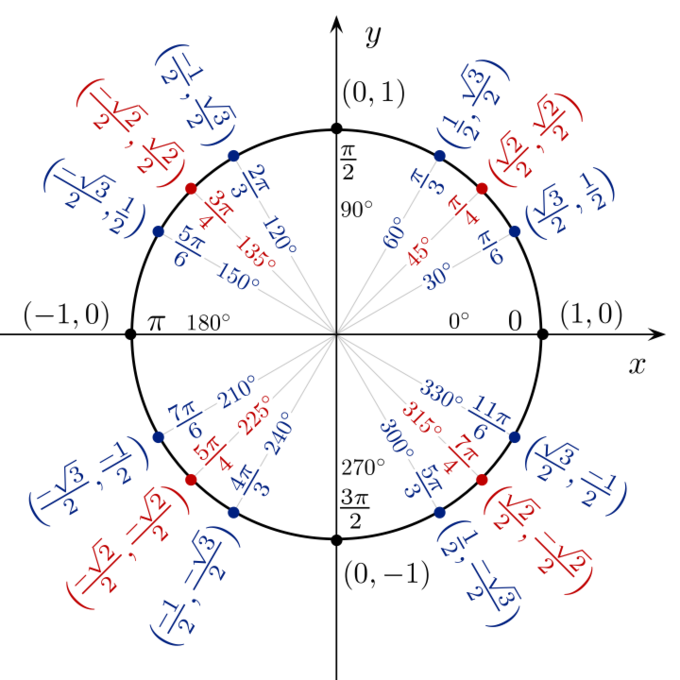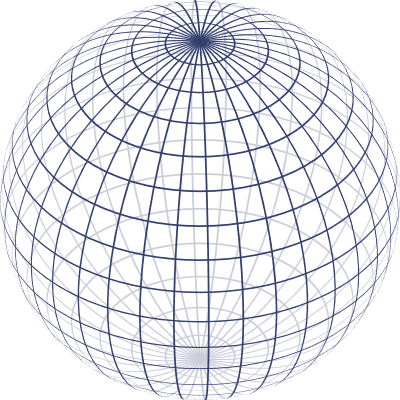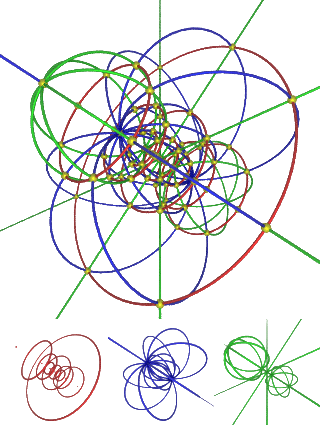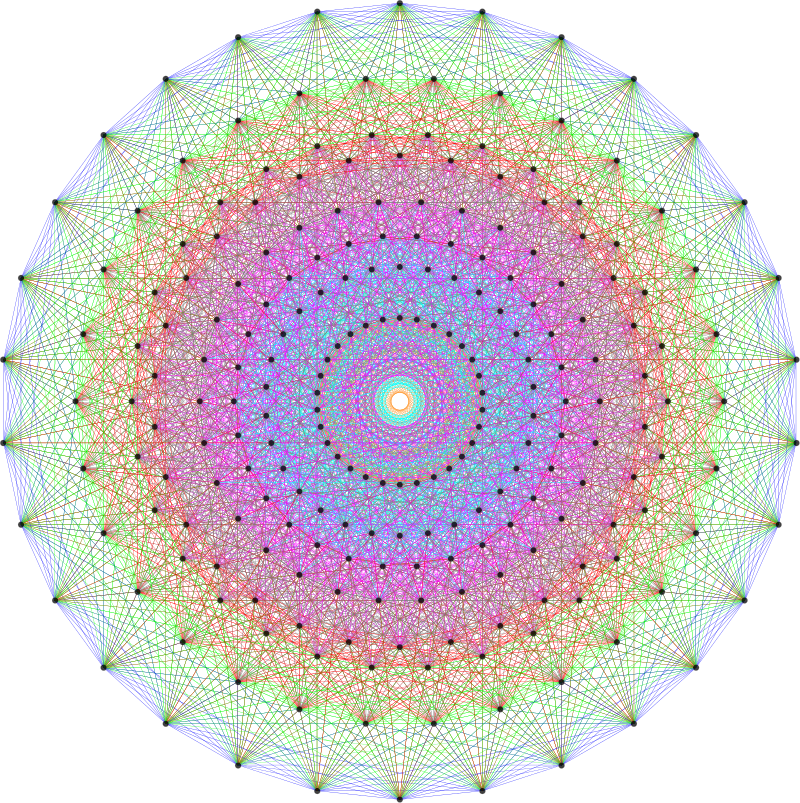Contents
[hide]Title: The Fundamental Group
Author: Aneesh Chakravarthula
Table of contents
- Introduction
- Definitions
- The Fundamental Group
- Unit Circle
- 2-Sphere
- The Figure Eight
- N-Sphere
- Lie Groups
- Fields that Use the Fundamental Group
- Conclusion
- Works Cited
- Images
Introduction
The fundamental group is a group in algebraic topology that is immensely benefited by calculus. This group has information about the holes of a space which helps determine the basic shape of a structure. It has a wide range of applications in the field of engineering.
This paper discusses the basics of the fundamental group, and gives an introduction to the structures and groups that constitute the fundamental group. This provides a foundation to understand the range of the fundamental group, and the general idea of how the structures and groups in the fundamental group turn out. There will be references to the definitions of significant terms and theorems in the fundamental group. These definitions and theorems will help explain the nature of the fundamental group. Finally the paper is concluded by giving examples of applications of the --Chakra55 (talk) 10:28, 6 December 2020 (EST)Bold textfundamental group in many fields.
Definitions
This section gives the definitions of some of the commonly used terms through the document.
- Path-connectedness means that it is product-closed. It is a product of different circles.
- Simply connected means that it is path-connected and every path between two points can be transformed into any other path while keeping the end points the same.
- Homotopic: This means that one map can be continuously deformed into the other.
- Homotopy invariant means that any two homotopic maps between the two spaces they are situated in will be identical.
- Isomorphic: If two structures are isomorphic, it means that inverse mapping can reverse the structure between them.
- A generator is a small set of objects that has operations applied to it to become a different set.
- Free group: A group in which no relationship exists between generators other than the relationship between the element and the inverse.
- Trivial group: A group which consists of one element.
The Fundamental Group
The discussion of the fundamental group begins with homotopic functions, which are functions that can be continuously deformed into the other. The fundamental group consists of all loops that are homotopic. The official definition of a homotopy from the functions f to g is F(x,0) = f(x), while F(x,1) = g(x). The fundamental group is the first homotopy group, and is a homotopy invariant. It consists of several structures including, but not limited to, the unit circle, 2-sphere, figure eight, and the n-sphere.
Many of these structures consist of different groups. One example would be the free group, which is the group of two generators. A generator is a small set of objects that has operations applied to it to become a different set. Another group is the trivial group which consists of one element, and the fundamental group is a trivial group. The trivial group is a subgroup of any other group. It is also called a zero group and is always isomorphic.
All these structures can be considered as different groups, however, the main characteristics of all these structures are the same.
The generator of the fundamental group is the basic identity of the unit circle, described in the next section, which maps onto itself.
Unit Circle
The unit circle is simply connected and path connected. The equation is x² + y² = 1, and the circle is symmetrical about the origin with a radius of 1. There are some basic properties that prove that the unit circle is connected, and show how there are other conclusions that can be drawn from this. The two loops in this case are the hemisphere above the x-axis and the hemisphere below the x-axis.
Theorem: Suppose that A is a subset of M. Then if A is path-connected, then A is connected.
Proof: If A is an open connected subset of M, then if A is path connected, then there is a path that starts at one point and ends at the other. If there is a path that starts at any random point and ends at the other, then there are definitely paths that can connect any two different points on the graph. The unit circle is an open connected subset. The unit circle is path connected, so according to the theorem, it is connected.
2-Sphere
The 2-sphere is another simply connected group, with the equation of x² + y² + z² = 1. The path eventually boils down to a single point. The fundamental group generally depends on the choice of the base point, however, there is no difference up to the isomorphism, which is a map that preserves sets. This is in the trivial fundamental group, which is homotopic. The Van Kampen Theorem is used to determine the fundamental group of a space X which has been expressed as a union of open sets, which ultimately proves that the spheres are in the trivial group.
The Van Kampen Theorem states: There are two different open and path connected subspaces, U₁ and U₂. The intersection between U₁ and U₂ is path connected and nonempty. The inclusion maps of U₁ and U₂ into space X induce group homomorphisms j₁: π₁(U₁, x₀) to π₁(X, x₀) and j₂: π₁(U₂, x₀) to π₁(X, x₀). The fundamental group eventually forms the combination of π₁(U₁ intersection U₂, X₀).
This theorem applies to many different sorts of structures, such as the 2-sphere and the Wedge Sum of Spaces. For the 2-sphere the sphere will be broken down into 2 different hemispheres, both intersecting along the x-axis. These hemispheres are connected, so π₁(Sₙ) = π₁(H₁) * π₁(Sₙ₋₁)π₁(H₂), which is in the trivial group.
The Figure Eight
The figure eight has two different loops and is in the free group. Its equation is (x² + y²)² = 2a²(x² - y²) with foci at (-a, 0) and (a, 0). A free group takes two different groups G and H, and constructs a new group G*H. The proposition that follows will display the basic properties of a free group, and will show how any subgroup of the figure eight can be considered as a free group.
Proposition: A subgroup of a free group is a free group.
Proof: If X is a set and if G is a subgroup of F(X), then there is a set Y in which G is isomorphic to F(Y). If |X|, a nonempty set, >=2 , then the free group on X is a nonabelian group, which is a group in which there is at least one group of elements, a and b that in which a*b does not equal b*a. Every element of a free group (except 1) has infinite order, which is the number of elements in the set.
N-Sphere
An n-sphere is a sphere located in (n+1) dimensional space. It is simply connected for n is greater than 1. It is path-connected except for when n=0. The equation for an n-sphere is x₀² + x₁² + x₂² + ... + xₙ² = 1.This has to do with symmetry, as the sphere is symmetrical about the origin. In this case, the n-sphere is considered to be in the trivial group.
Some alternatives to the n-sphere are:
Implicit Surface: The equation for an implicit surface is x₀² + x₁² + x₂² = 1.
Disk with collapsed rim: x₀² + x₁² <= 1 is the inequality for the disk. The rim is described by the equation x₀² + x₁² = 1
Suspension of equator: The n-sphere: x₀² + x₁² + …+ xₙ². At the equator, the n-1 sphere exists. These alternatives have some sort of a similarity with the n-sphere. Other alternatives of the n-sphere are an extension of these alternatives.
Lie Groups
Lie group G is a group and G is a manifold. In this group, multiplication and inversion are smooth maps. Different groups have a different number of dimensions. Lie groups are groups that have to do with symmetry of geometric objects. Lie groups have simple lie groups as their basic building blocks.
Theorem: Suppose G and H are lie groups and f: g -> h is a Lie algebra homomorphism. If G is simply connected, then φ : G -> H is a unique Lie group homomorphism such that φ = f.
Cartan’s Theorem: A subgroup of a lie group is a lie group.
This theorem demonstrates how any lie group can be considered as a subgroup of a lie group.
Fields that Use the Fundamental Group
Most forms of engineering will have to use some form of math or the other, and some specific forms of engineering deal with calculus. In particular, these forms of engineering deal with geometric figures, where there is a great deal of a physical application of calculus.
Electrical engineering uses many different kinds of forms of math which includes calculus. This includes the fundamental group, as it contains some of the information about the basic shape, holes, and topological space which are relevant to Electrical engineering. A small application of the fundamental group would be to calculate the structure of radio waves sent by one station to another station. The engineers would see where the holes are, and use that to find the structure.
Mechanical engineering uses calculus, among other forms of math, particularly for physics. This again includes the fundamental group. This is very different from electrical engineering, as there is less of a focus on a vast variety of math concepts, and more on some specialized math concepts, particularly ones that have to do with physics and calculus. An application of this would be a thermal sensor, which receives heat waves. In order to get the structure of the waves, the engineers would use the fundamental group to find where the holes are.
Aerospace engineering has different kinds of complex systems that are required to calculate certain types of physical equations and representations. These physical representations use various structures and groups in the fundamental group. The structures in the fundamental group formulate the basis of some of the complex structures that these engineers would have to deal with.
Conclusion
The fundamental group is an important topic in Calculus and has a wide range of applicability across many industries. This paper gives the basic elements of the fundamental group to provide an understanding of the concepts to anyone new and serves as a refresher to someone familiar with it. The Works Cited section has some references for further reading.
Works Cited
- Boundless. (n.d.). Boundless Algebra. Retrieved December 05, 2020, from https://courses.lumenlearning.com/boundless-algebra/chapter/trigonometric-functions-and-the-unit-circle/
- Hall, S. (2016, November 09). Jobs That Use Math Daily. Retrieved December 05, 2020, from https://work.chron.com/jobs-use-math-daily-15848.html
- Siu, Y. (2007). A proof of Cartan's theorems $A$ and $B$. Retrieved December 05, 2020, from https://projecteuclid.org/euclid.tmj/1178243178
- University of Bristol. (2020, December 04). What is Engineering Mathematics? Retrieved December 05, 2020, from http://www.bristol.ac.uk/engineering/departments/engineering-mathematics/courses/undergraduate/what-is-emat/
- Fundamental Group. (n.d.). Retrieved December 05, 2020, from https://mathworld.wolfram.com/FundamentalGroup.html
- Why Choose A Mathematics Related Profession? (n.d.). Retrieved December 06, 2020, from https://www.math.ucdavis.edu/~kouba/MathJobs.html
- An Illustrated Handbook. (n.d.). Retrieved December 06, 2020, from https://www.mathphysicsbook.com/mathematics/algebraic-topology/counting-the-ways-a-sphere-maps-to-a-space/the-fundamental-group/
- Lie groups and Lie algebras: Geometry, Algebra, and Combinatorics. (n.d.). Retrieved December 06, 2020, from https://www.mathseminar.org/LieTheorySeminar/
Images
- Link to the image
- https://upload.wikimedia.org/wikipedia/commons/0/08/Sphere_wireframe.svg
- Link to the image
- By derivative work: Pbroks13 (talk)Hypersphere_coord.gif: Claudio Rocchini - Hypersphere_coord.gif, CC BY 3.0, https://commons.wikimedia.org/w/index.php?curid=4362118
- By Jgmoxness - Own work, CC BY-SA 3.0, https://commons.wikimedia.org/w/index.php?curid=8893046






